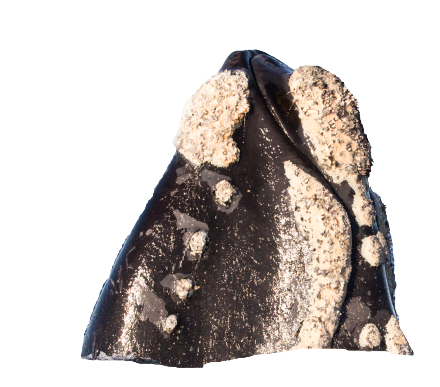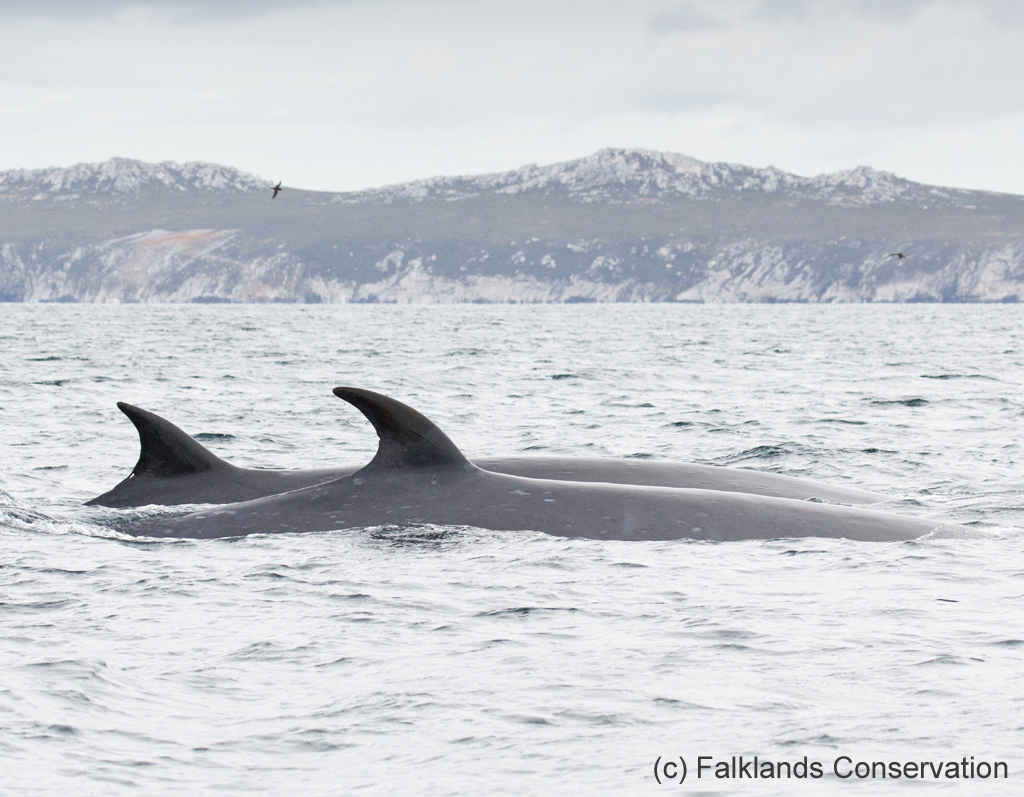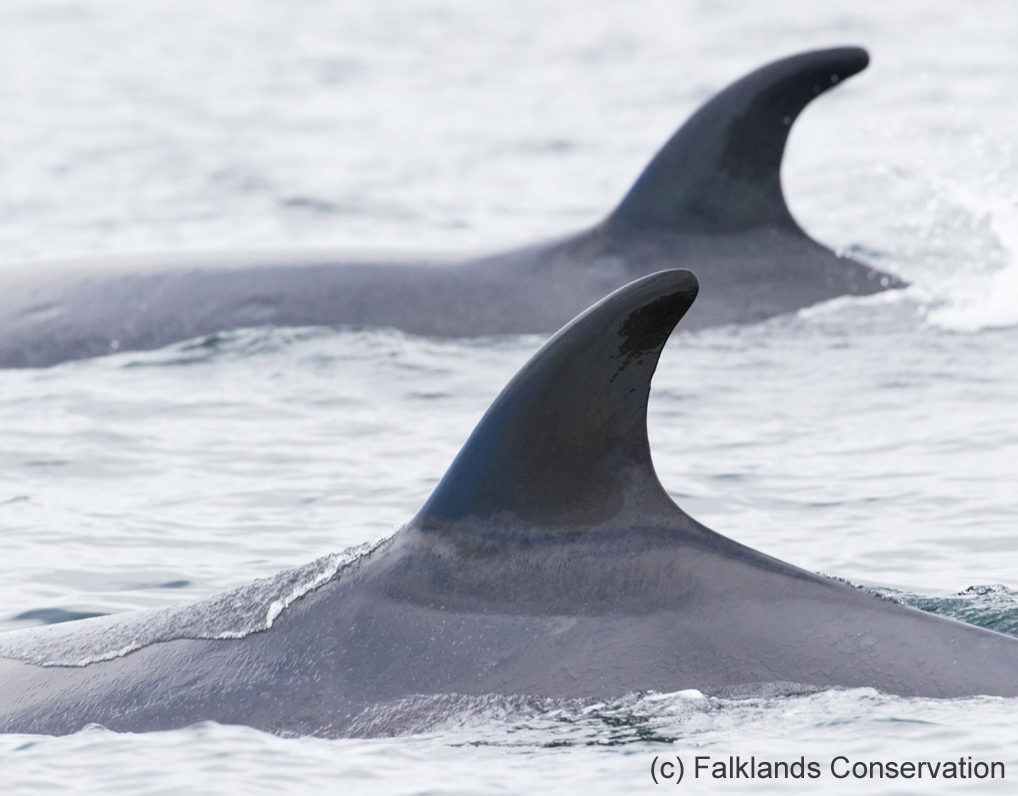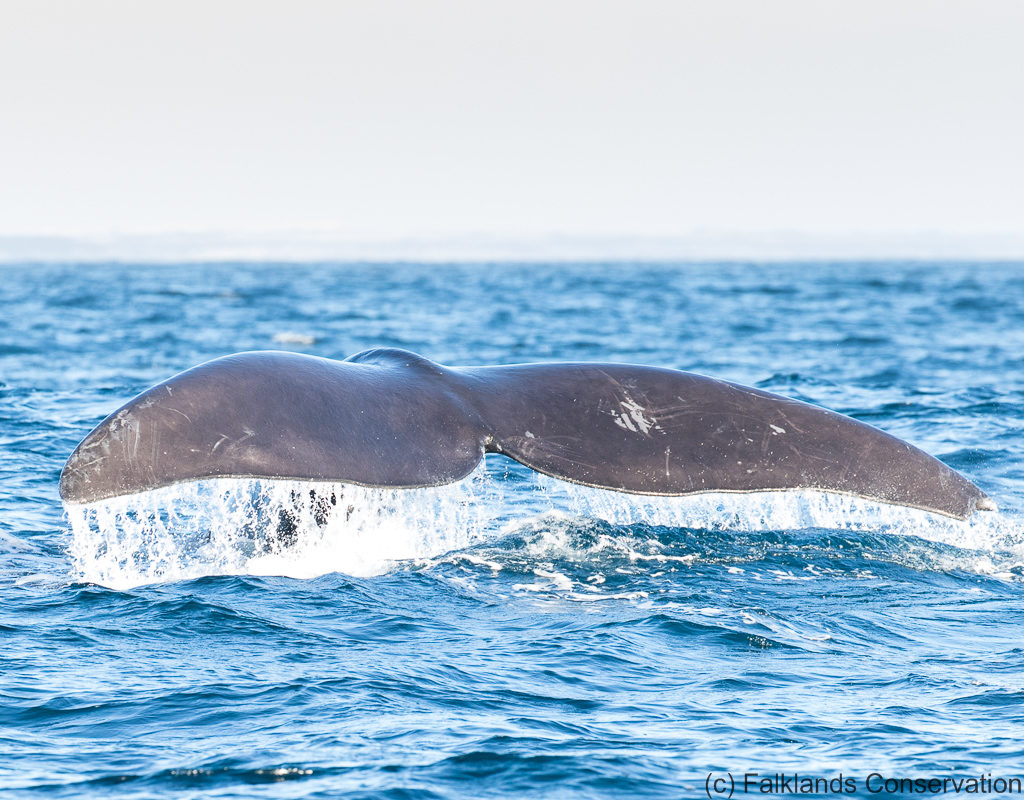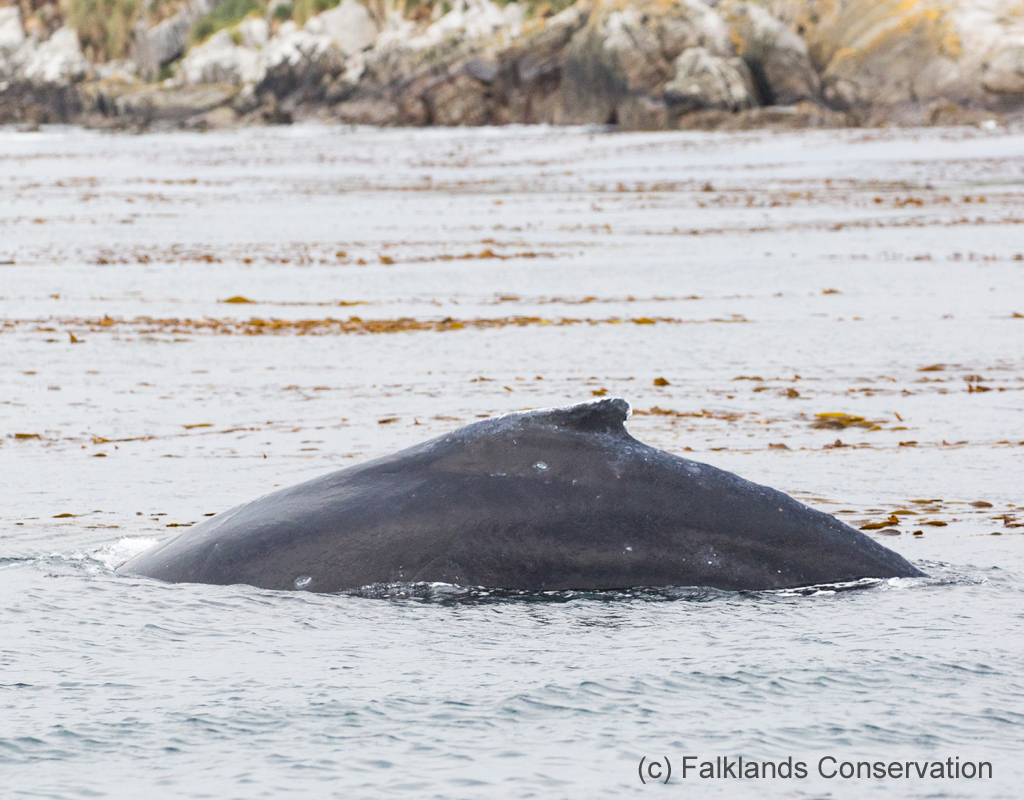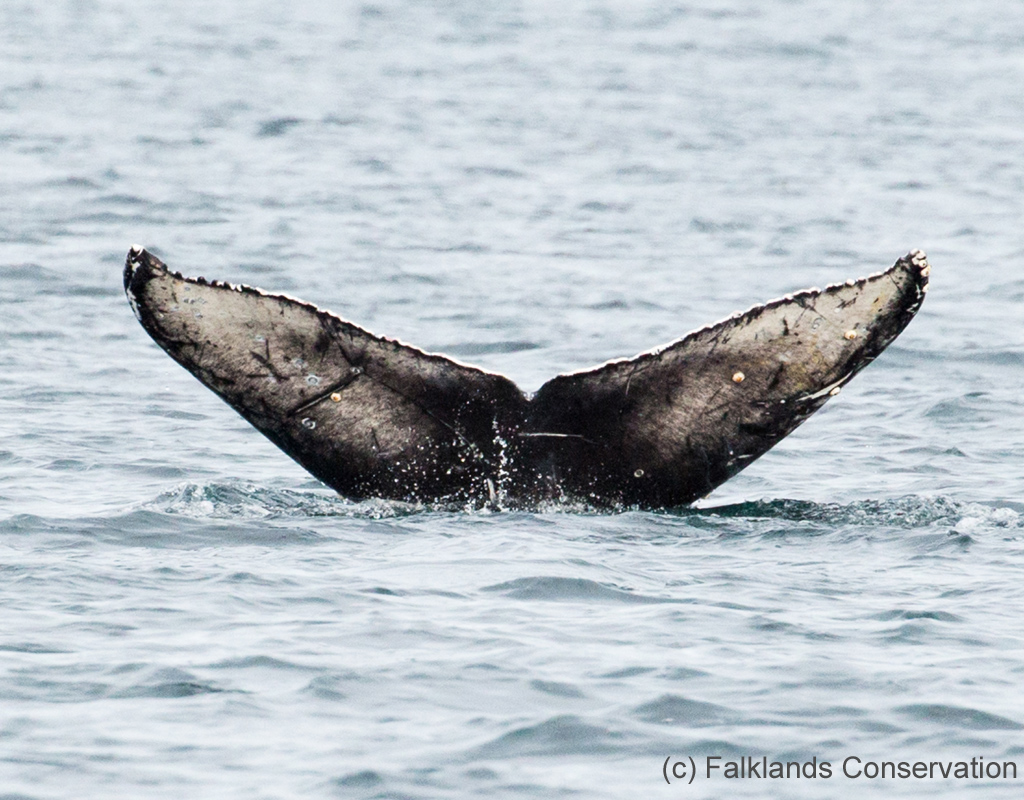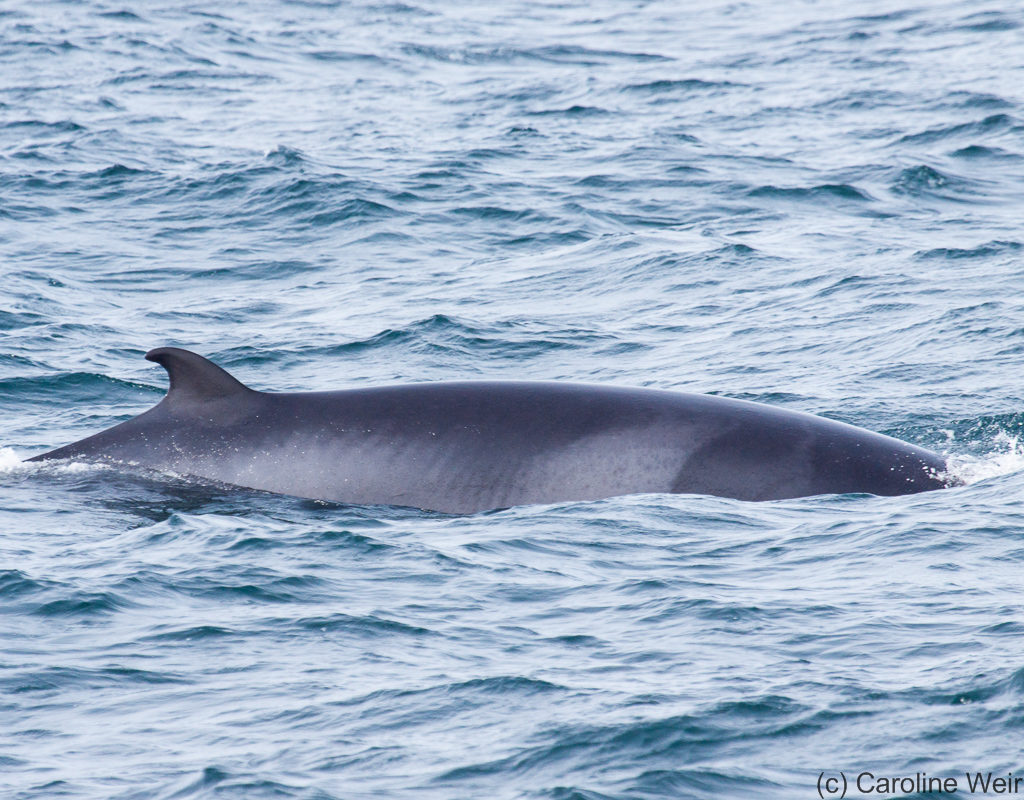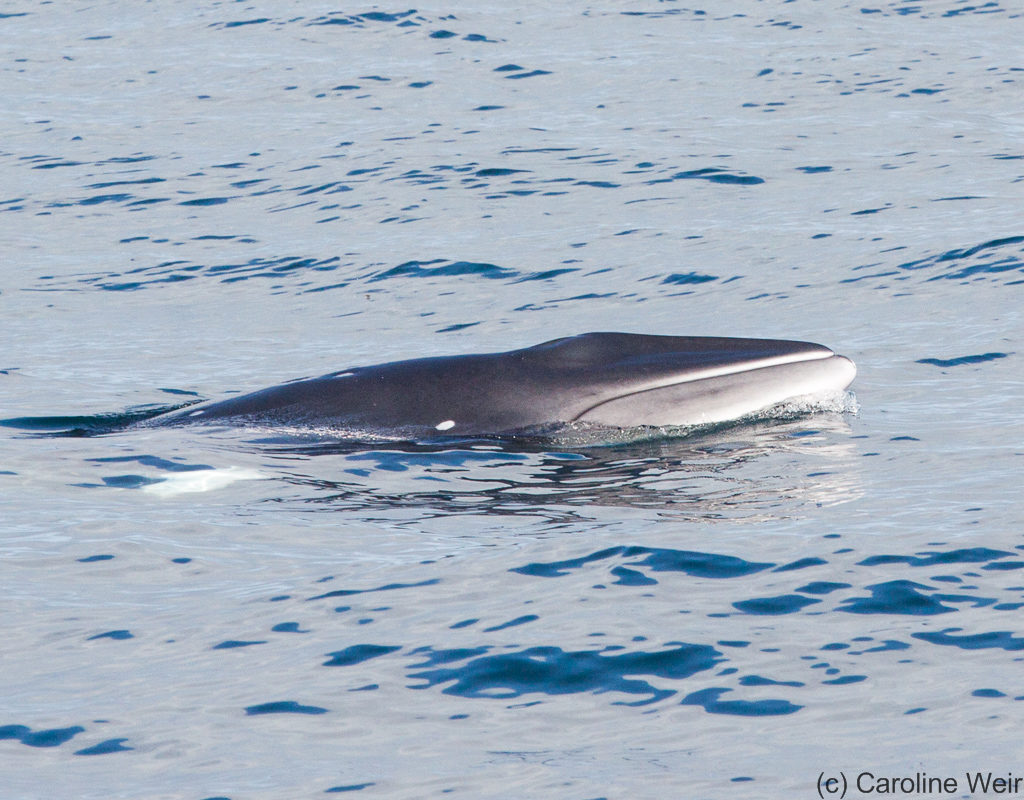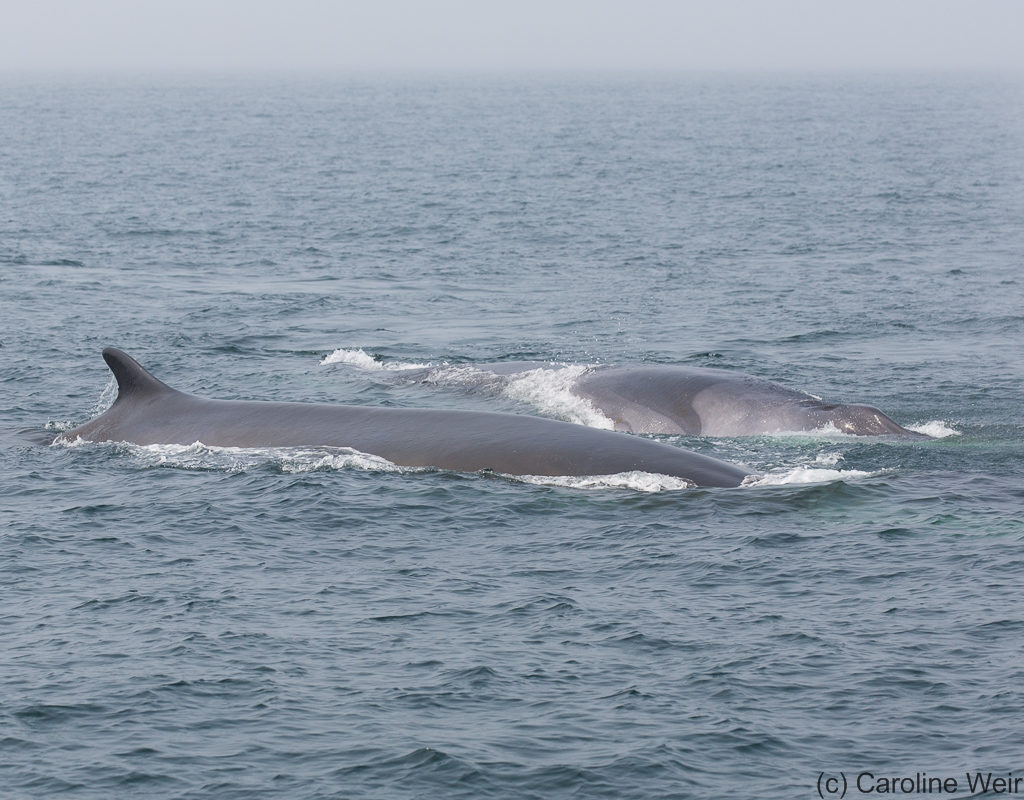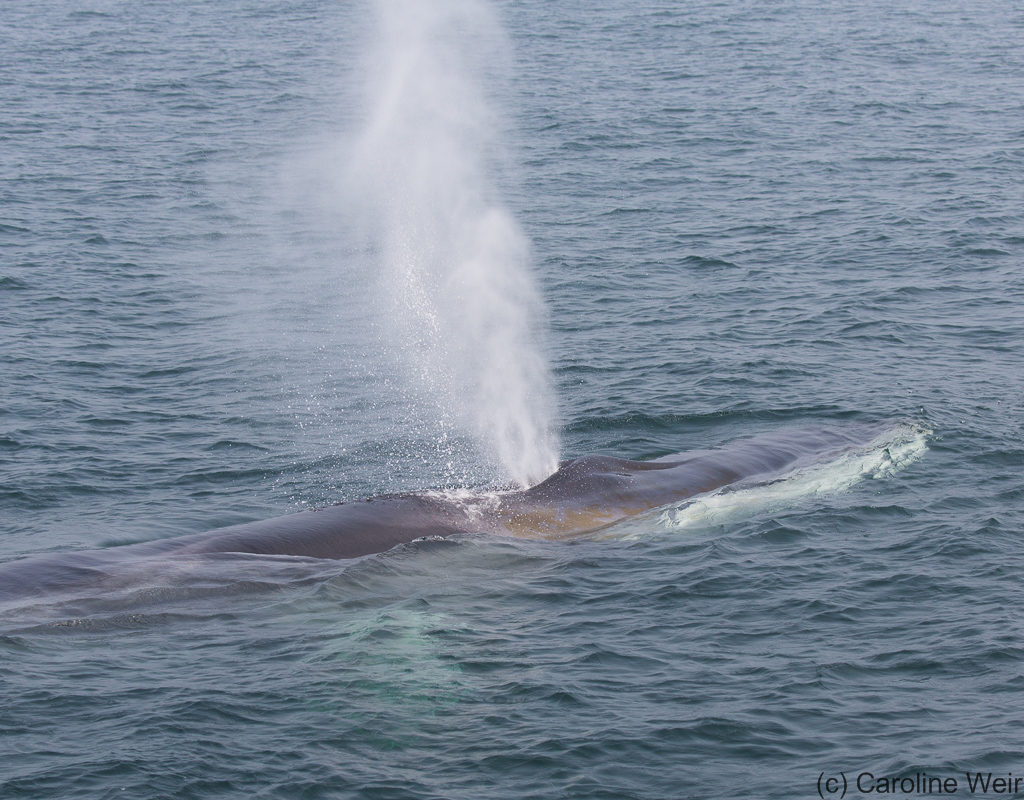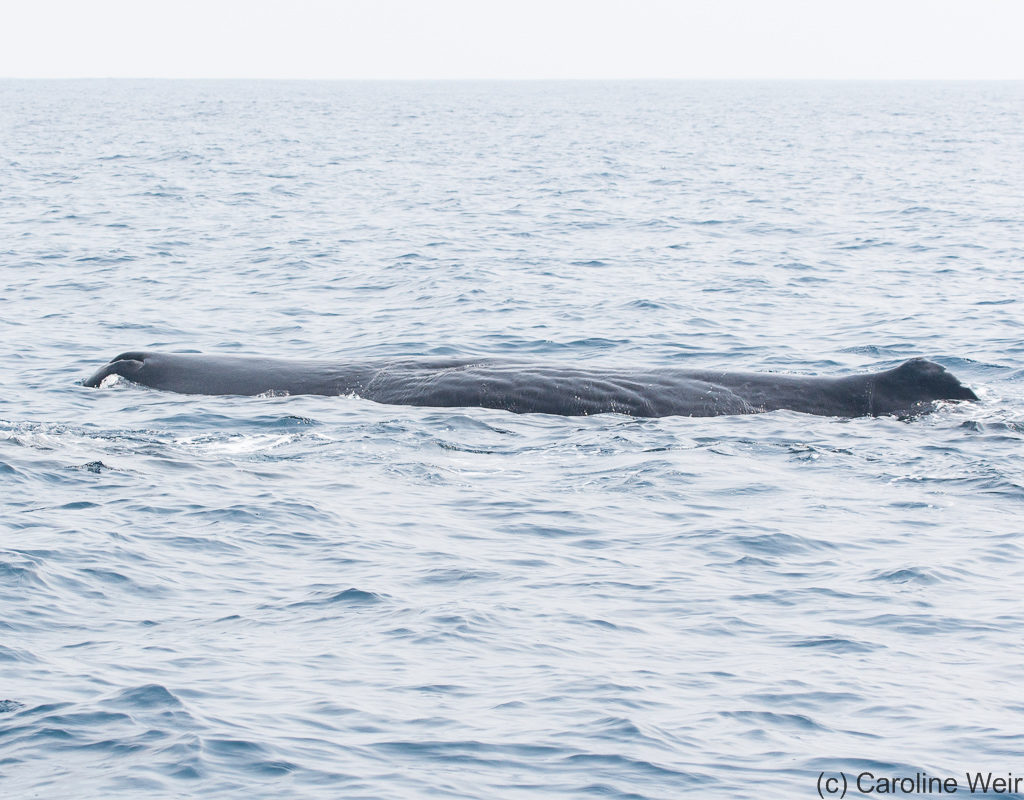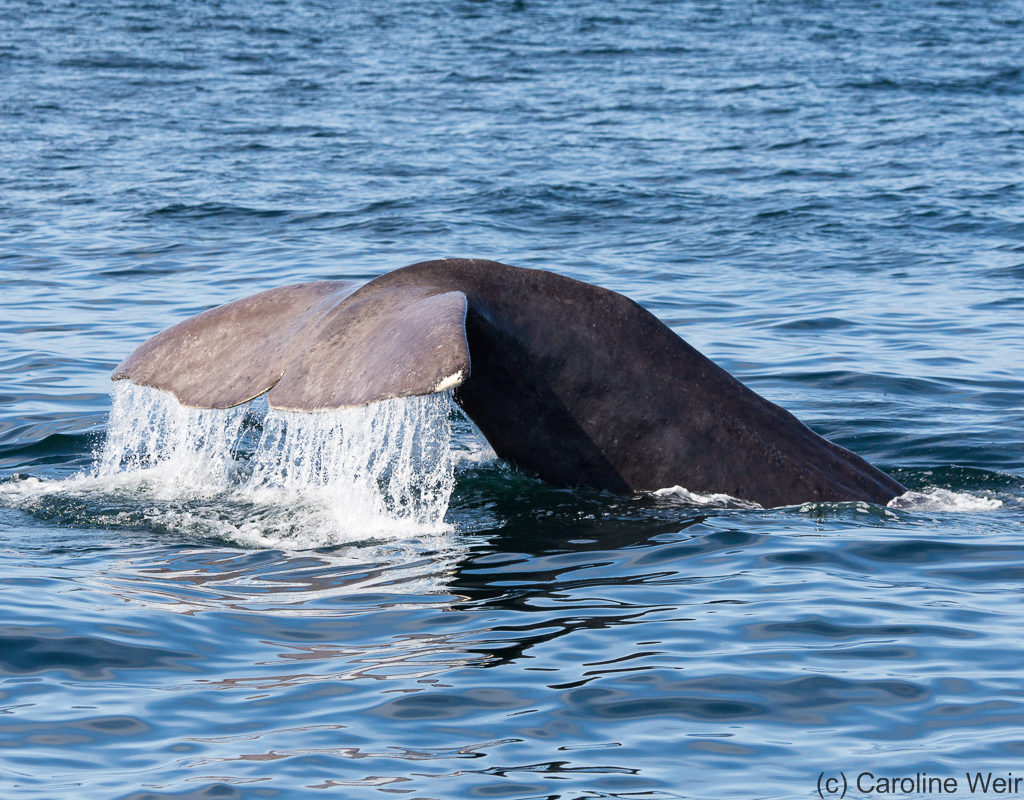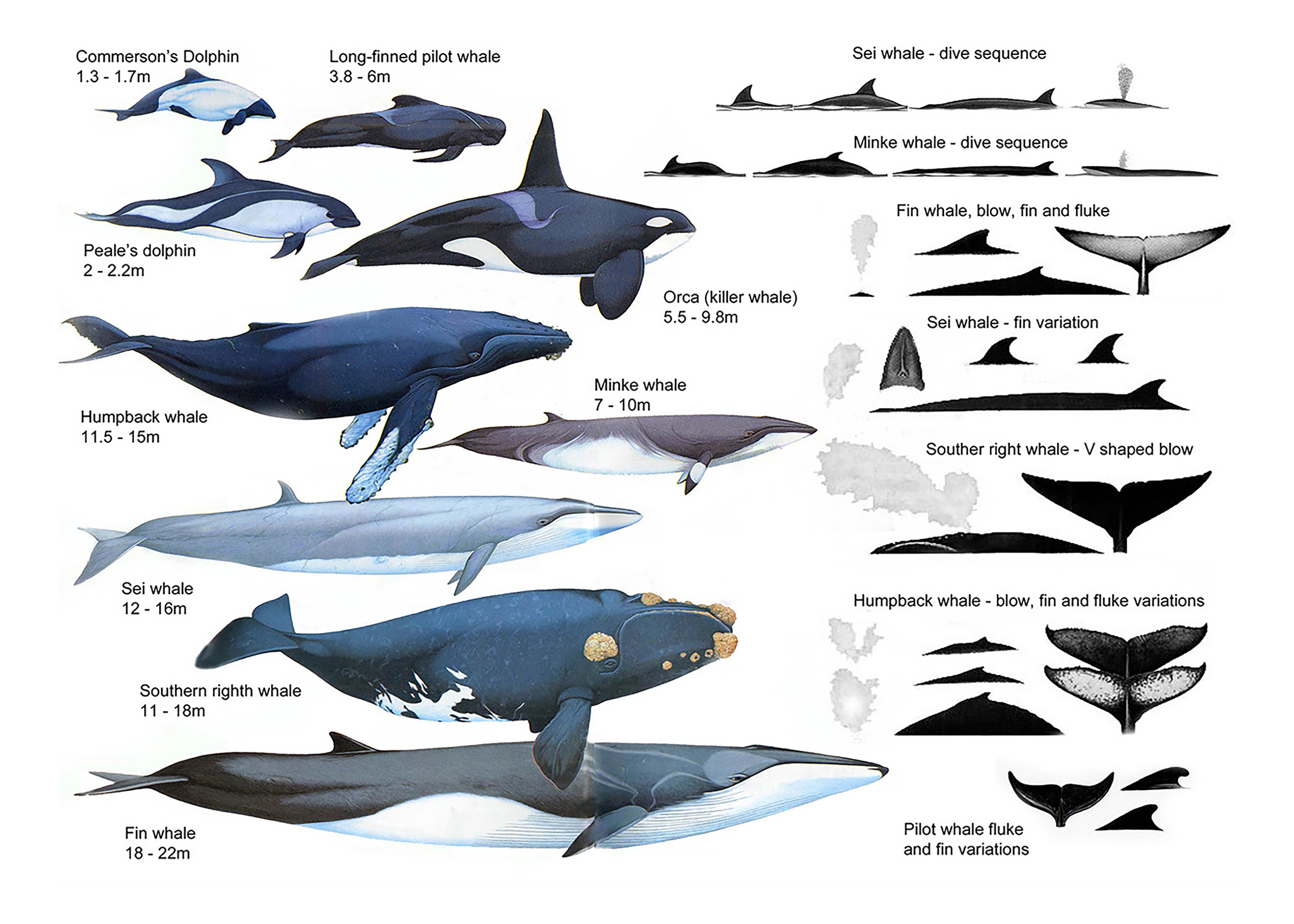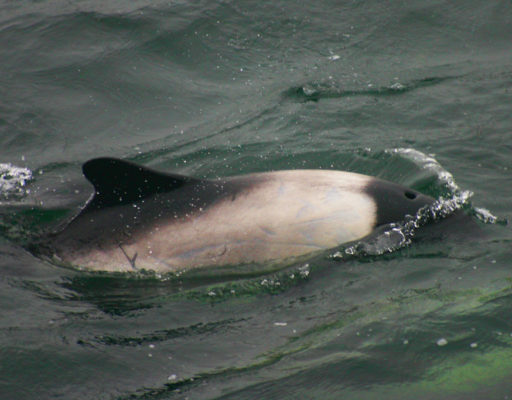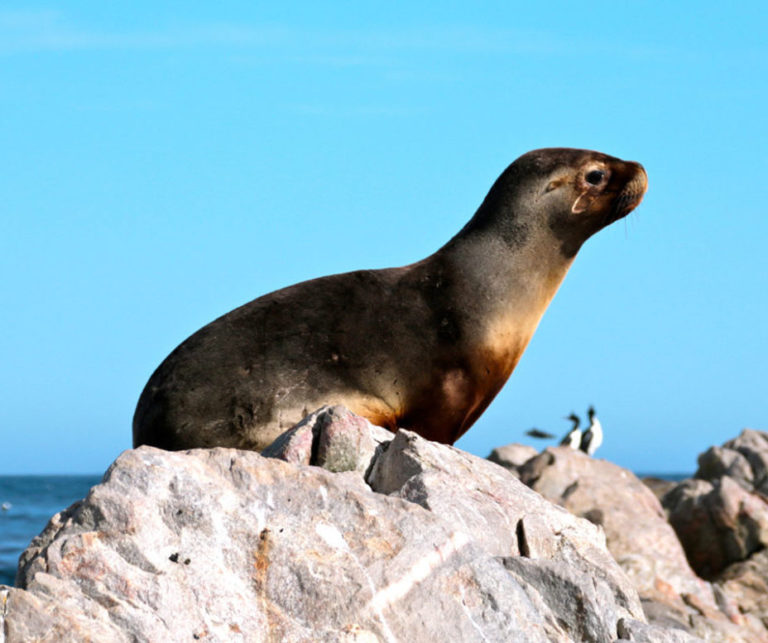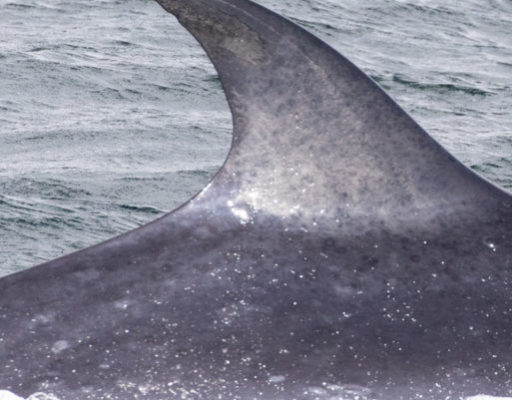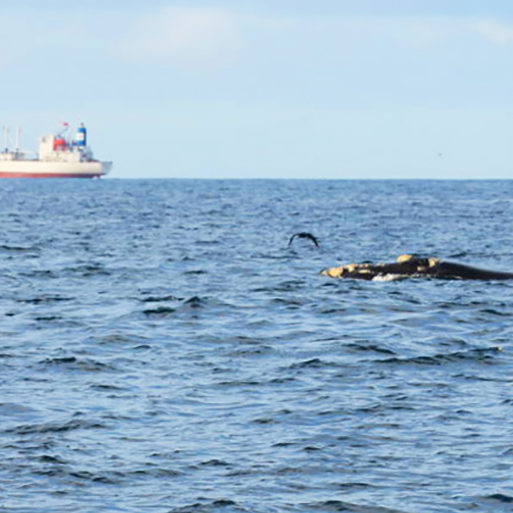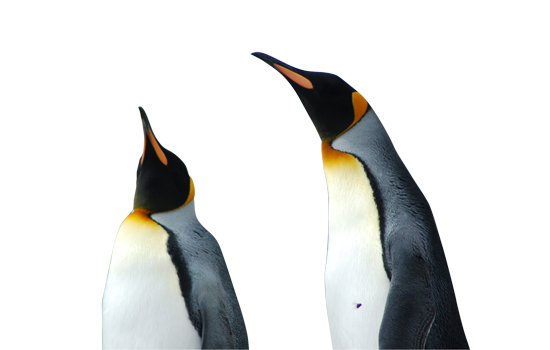Sei whale (Balaenoptera borealis)
Distributed globally, sei whales migrate seasonally between summer feeding grounds located in cooler waters, and winter breeding areas located in the (sub)tropics. They do not range as far into cold polar waters as many other baleen whales.
They are a large (averaging 15 m long) and sleek species, with a tall dorsal fin that is located two-thirds of the way along the back from the head. Their blows are tall and columnar.
Sei whales are the most commonly observed whale in coastal Falklands’ waters, using the area during summer and autumn (primarily between November and June), to feed on squat lobster krill and other crustaceans.
Sei whales are one of Falklands Conservation’s key study species
Track them now



